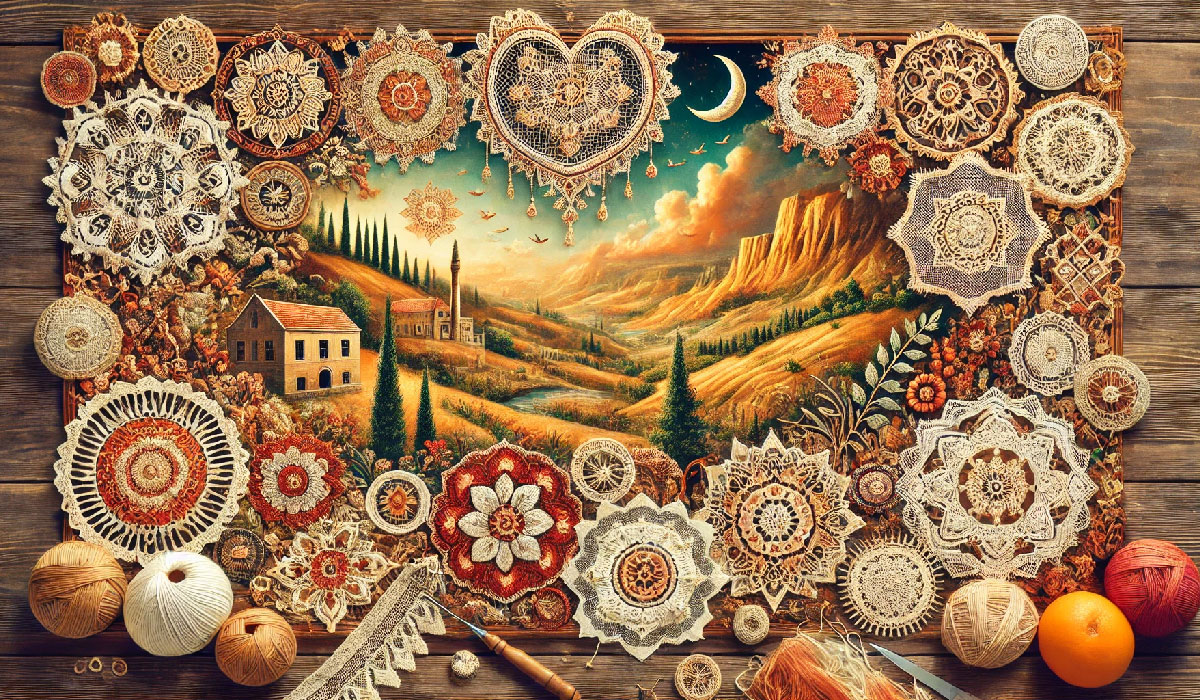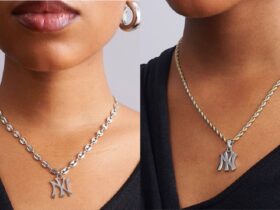Cypriot Renda, the intricate lace-making tradition of Cyprus, weaves a story of heritage, skill, and artistry. This fine craft has graced everything from delicate bridal wear to ornate home furnishings, showcasing the island’s rich cultural tapestry influenced by Greek, Turkish, and Middle Eastern roots. As we explore Cypriot Renda, we’ll delve into its historical origins, the craftsmanship behind it, its role within Cypriot culture, and efforts to keep this beautiful art alive in the modern world.
Understanding Cypriot Renda
Cypriot Renda refers to the traditional lace-making that has been a part of Cyprus’s cultural heritage for centuries. The term “Renda” itself originates from the Cypriot Greek language, signifying the meticulous handcrafted lace and embroidery that has been passed down through generations. The lace is renowned for its detailed needlework, often featuring a blend of crochet and tatting techniques, each stitch reflecting the island’s diverse cultural influences.
Historical Evolution
The origins of Cypriot Renda are traced back to the Ottoman Empire when the art form was significantly influenced by the interchange between the local Greek and Turkish populations. This period enriched Cypriot Renda with a variety of patterns that reflect a mix of Byzantine, Ottoman, and local traditions, creating a unique fusion that is evident in the lacework’s designs and techniques.
The Craftsmanship of Cypriot Renda
Cypriot Renda is distinguished by its meticulous and traditional lace-making techniques. Artisans often use needle lace techniques, where fine patterns are stitched onto a fabric stretched in a hoop. This is complemented by crochet lace, which allows for more free-form designs including geometric and floral motifs. Another older method used is tatting, a technique involving looping and knotting to create sturdy yet delicate lace.
How Cypriot Renda is Made
Cypriot Renda is crafted using age-old methods that have been passed down through generations. Here are a few ways artisans make this beautiful lace:
- Needle Lace: This is where the magic starts with just a needle and thread. Artisans use a detailed stitching method to create delicate patterns right on the fabric.
- Crochet Lace: Using a small hook, crafters loop and twist the thread to make different shapes and textures.
- Tatting: This old-school technique involves forming knots and loops to develop strong yet graceful lace designs.
Materials and Tools
The choice of materials in Cypriot Renda plays a crucial role in its crafting. Typically, artisans opt for fine cotton or silk threads, which are both durable and lend a subtle sheen to the lace. Occasionally, metallic threads are introduced to add a festive sparkle, suitable for decorative or ceremonial garments and textiles.
The Patterns and Shapes of Cypriot Renda
The designs in Cypriot Renda are full of meaning and beauty, often inspired by nature and the island’s history:
- Floral Patterns: Many Renda pieces feature flowers and plants, celebrating Cyprus’s lush landscapes.
- Geometric Shapes: You’ll also see lots of lines and shapes that fit together perfectly, showing the artist’s skill.
- Symbolic Motifs: Some designs include symbols like stars or moons, which have special meanings in Cypriot culture.
These methods and designs come together to make Cypriot Renda not just a craft, but a storytelling tool that captures the heart of Cyprus.
Design and Aesthetics
Traditionally, Cypriot Renda features a rich array of designs, from elaborate floral motifs that mimic the Mediterranean flora to geometric patterns that echo the island’s historical and architectural influences. These designs are not just decorative but are often imbued with meanings, symbolizing elements like love, unity, and the continuity of life.
Cultural Significance
Cypriot Renda is more than just pretty lace; it’s a special part of Cyprus’s culture. This lace-making has been around for a long time and is a way for people in Cyprus to show their history and skills. Long ago, families would make Renda to decorate clothes and homes for big celebrations like weddings. This lace was so treasured that it was often given as a gift from one generation to the next.
Today, Cypriot Renda is still a big deal in Cyprus. It shows off the island’s mix of Greek, Turkish, and Middle Eastern influences, making it unique. During festivals and local markets, you can see artisans making Renda. They use the same old techniques their grandparents did, which keeps the tradition alive. This beautiful lace not only connects people to their past but also brings them together, celebrating the rich culture of Cyprus.
Challenges and Opportunities
Despite its beauty and cultural importance, Cypriot Renda faces challenges like the decline in artisanal interest and competition from mass-produced textiles. However, the modern revival efforts are encouraging. Workshops, educational programs, and local festivals are increasingly focusing on reviving Renda, teaching new generations the ancient techniques that make this craft so unique.
The Global Stage
Globally, Cypriot Renda is gaining recognition as an emblem of Cypriot craftsmanship. It is featured in international craft exhibitions and has been incorporated into modern fashion by designers who appreciate its beauty and historical significance. This international interest helps promote the craft and encourages a new generation of artisans to take up the lace-making tradition.
Promoting Cypriot Renda
To sustain and promote Cypriot Renda, supporting local artisans is vital. By buying authentic Renda pieces, participating in workshops, and spreading knowledge about the craft, individuals can contribute to its preservation. Additionally, leveraging online platforms to showcase Renda can reach a global audience, further elevating its profile and ensuring its survival for future generations.
Conclusion
Cypriot Renda is not just lace; it is a narrative of Cyprus’s rich history and cultural fusion. By understanding and appreciating this craft, we can all contribute to its legacy, ensuring that Cypriot Renda remains a vibrant and cherished art form. Through continued education, preservation efforts, and global promotion, the delicate threads of Cypriot Renda will weave through the fabric of our cultural heritage for many years to come.















